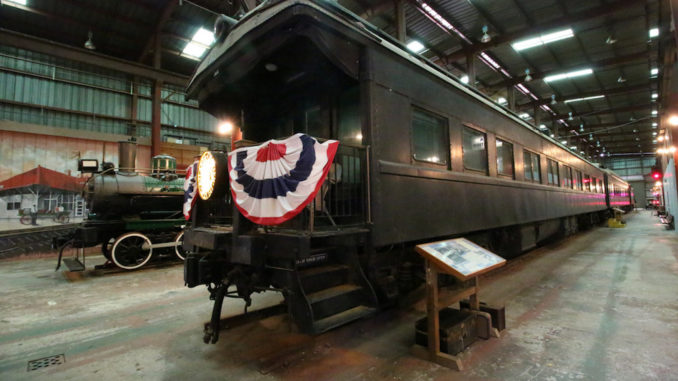
The Southeastern Railway Museum in Duluth has reopened a historic Pullman car that transported the body of President Warren G. Harding after he died in 1923 following an interior renovation.
The Superb is one of five remaining Pullman cars used by the president of the United States. It is the only surviving car to carry a deceased president who died while in office.
Museum volunteers spent more than 200 hours on the project. The museum applied for a National Railway Historical Society (NRHS) Railway Heritage Grant for the project, and the Atlanta Chapter of the NRHS contributed funds to support the project.
The museum reopened on a limited basis on May 30.
The Pullman Co. built the heavyweight car in 1911. The United States Department of the Interior approved the Superb for listing on the National Register of Historic Places in 1999.
As part of the project, the museum’s volunteers upgraded the Superb’s interior painting, lighting and linens to help present the car in a historically accurate way. The restoration marks the first major rehabilitation of the railcar since 1999, and the museum expects to complete the renovation by the end of May.
Both Harding and President Woodrow Wilson used the Superb. Harding used the car during his planned two-month “Voyage of Understanding,” which began in Washington, D.C., on June 20, 1923.
Before the trip finished, Harding fell ill and died in San Francisco on Aug. 2, 1923. The Superb then carried the president’s coffin to Washington, D. C. for his state funeral and to Marion, Ohio, for his burial.
Later, Pullman renamed the car the “Los Angeles,” and in 1926, it was repainted red and gold and renamed the “Pope Pius XI” for service as part of “The Cardinal’s Train.” The train transported cardinals, bishops and priests from New York City to Chicago for the 28th International Eucharistic Congress.
In 1969, the Seaboard Coast Line Railroad donated the car, then identified as No. 301, to the museum. It is the second-oldest steel private car in existence and maintains its original floor plan.
For more information about the museum, its operating hours and its updated admission fees, visit SoutheasternRailwayMuseum.org.
